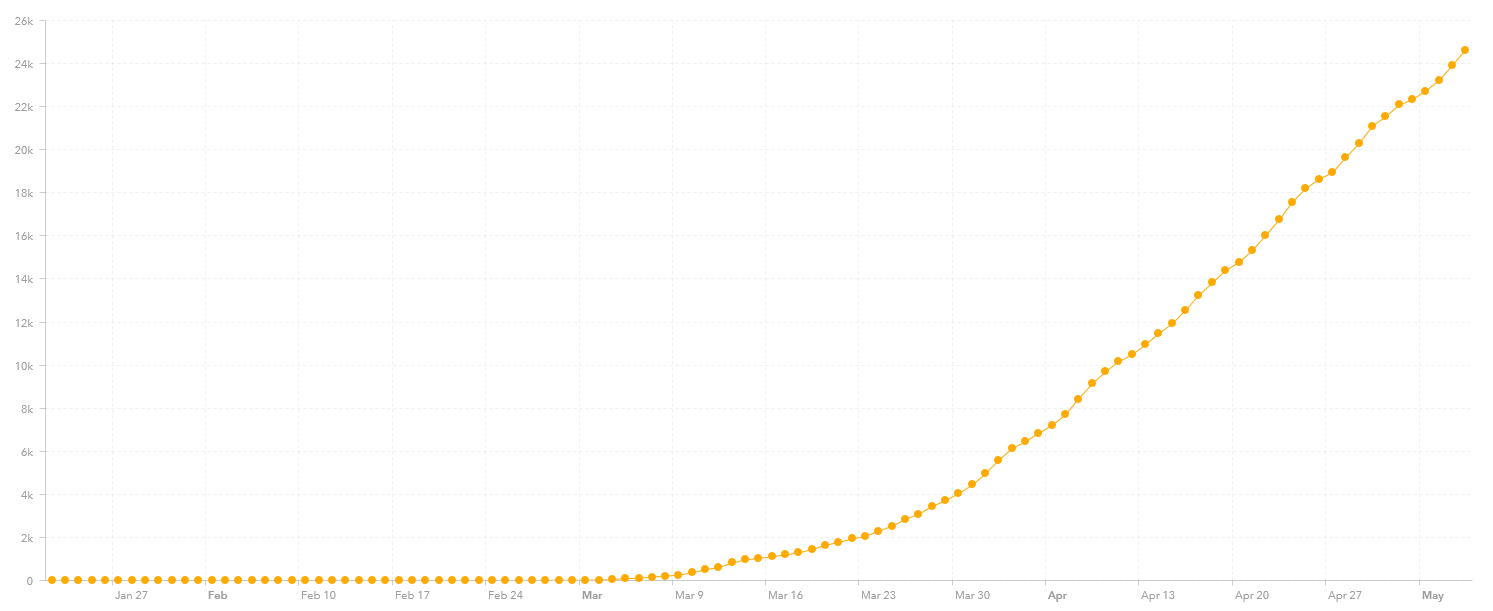This updated post addresses the question of when is the virus mitigated, or even better when it is contained, and eventually when should restrictions be relaxed. So we look at South Korea compared to the seven worst plagued countries in the world (see post from yesterday on the “big seven”). We then look at three other countries in East Asia that were near China and had to deal with the virus sooner than most. We then look at a few other countries that appear to getting the virus under control. I think there is considerable value here in comparing results across several countries. All these are simple graphs pulled from the Johns Hopkins CSSE website as of 12:32:33 AM: Johns Hopkins CSSE
Here is the graph for the number of cases in South Korea, population 52 million. They have 10,822 reported cases, only 120 more cases than reported around this same time two weeks ago. This is clearly what controlling the virus looks like. They have had a total of 256 deaths, for a mortality rate of 2.37%

This is good. This looks like a country that now has the situation under control. Note how long it took (time is on the x-axis).
In comparison, are the United States (1,263,052 reported cases), Spain (221,447 reported cases), Italy (217,185 reported cases), United Kingdom (212,626 reported cases), Russia (187,859 reported cases), France (174,918 reported cases) and Germany (169,430 reported cases). It looks like Spain, Italy, France and Germany are reaching their deflection point. The United States, United Kingdom and Russia clearly have not. The graphs from yesterday are in this post:
In contrast here are the graphs for three other East Asian nations, Japan (15,477 cases and 577 deaths), Taiwan (440 cases and 6 deaths) and Vietnam (288 cases and no reported deaths). Not sure why Japan does not have the virus under control like South Korea does. This would be worth looking into.
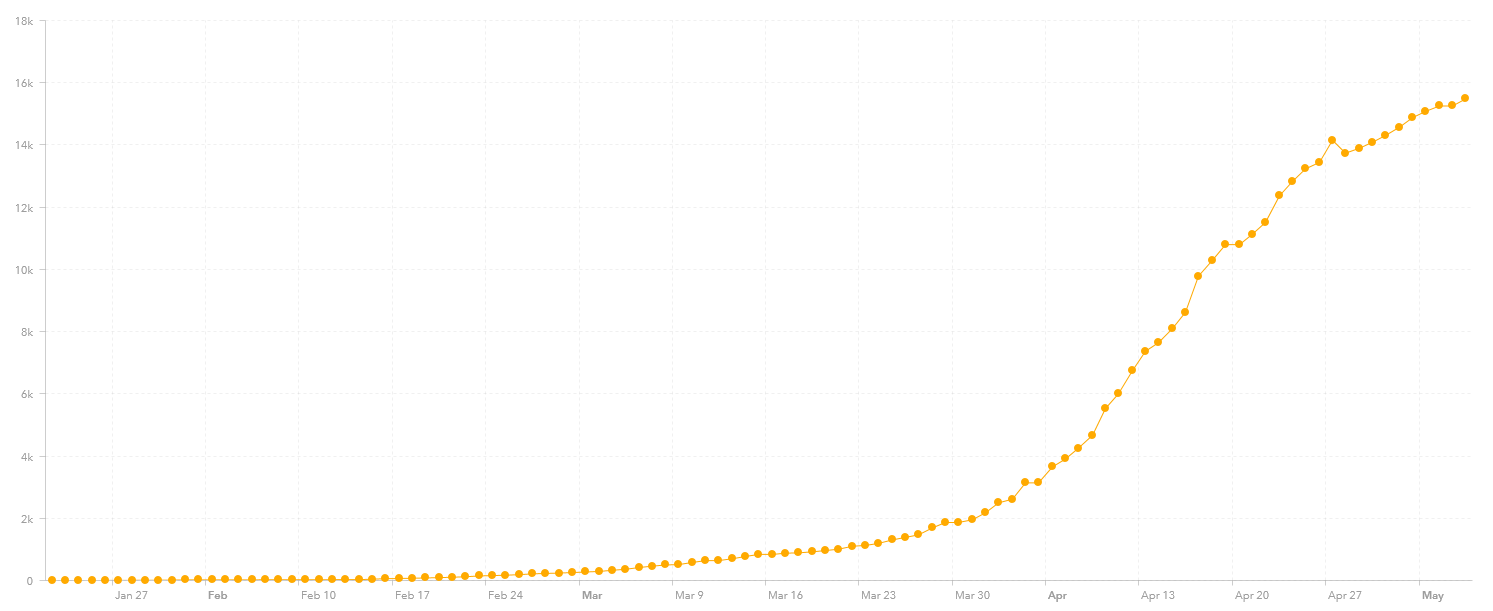
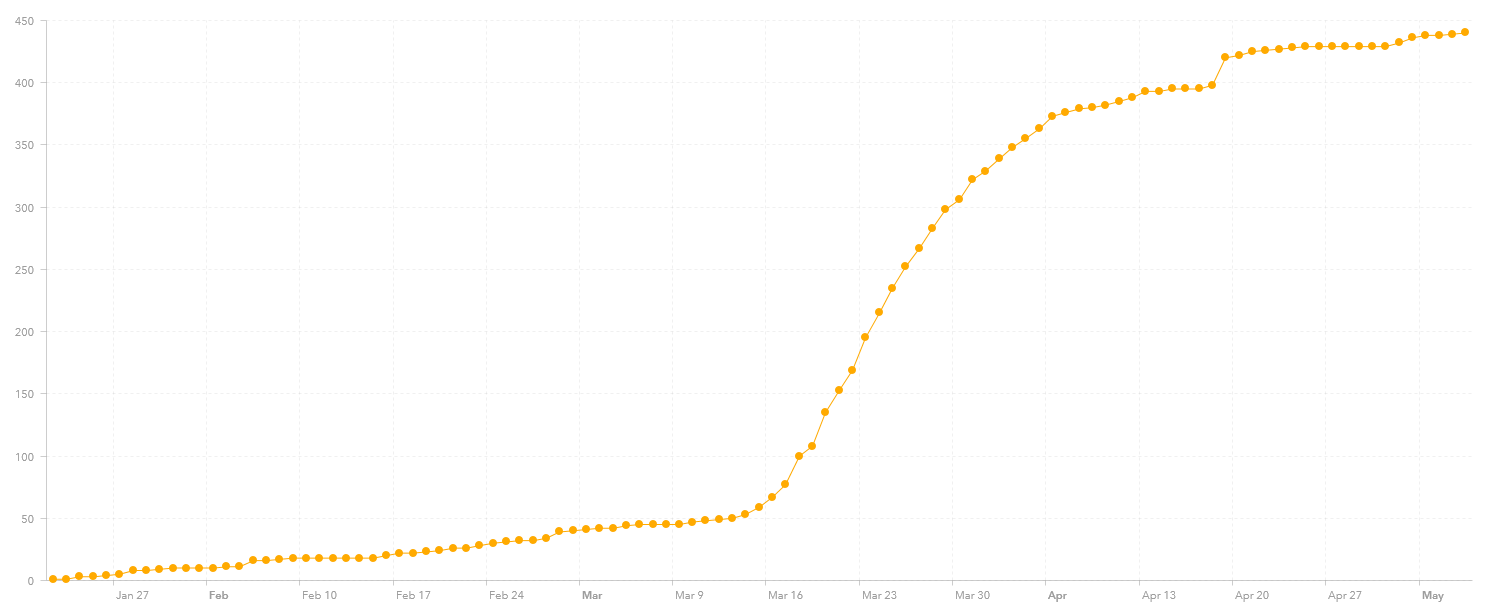

And here is China (83,976 reported cases and 4,637 reported deaths), although there is still some concern about the accuracy of their statistics:
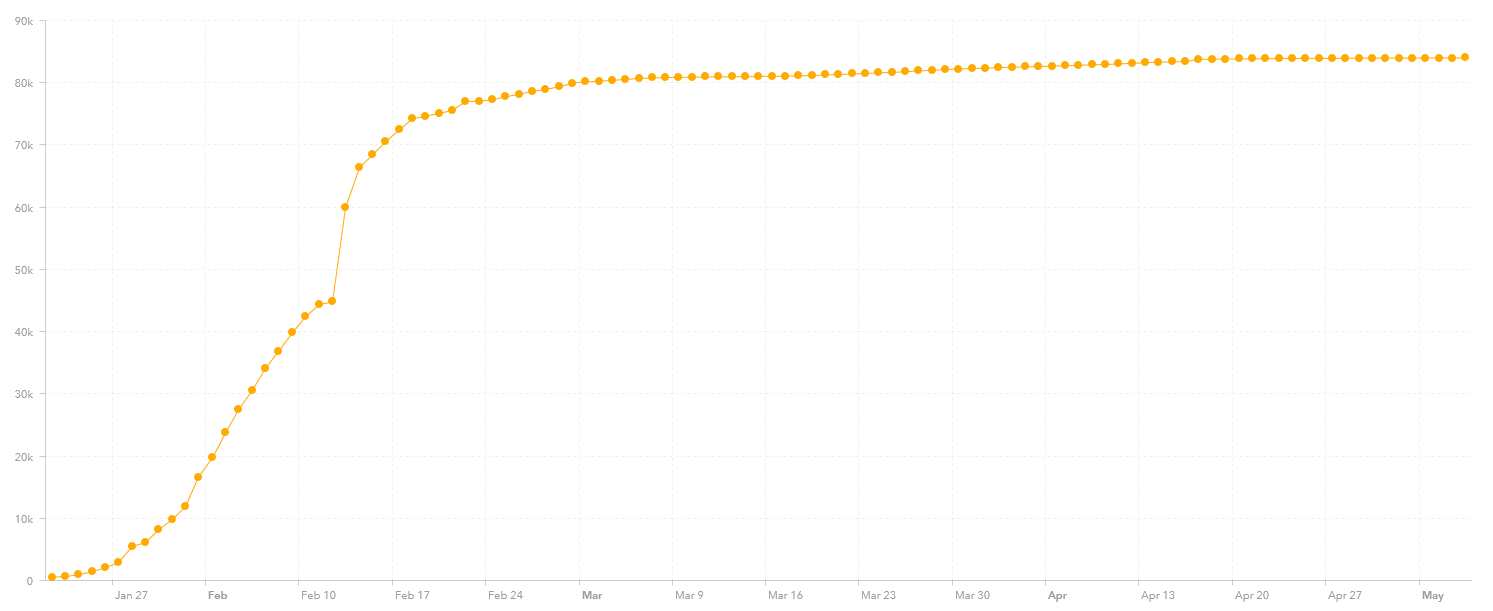
Finally, let me add to this collection of graphs Austria (15,774 reported cases and 614 deaths), Denmark (10,416 reported case and 522 deaths), Czech Republic (8,065 reported cases and 271 deaths), Norway (8,055 reported cases and 218 deaths), Australia (6,914 reported cases and 97 reported deaths), Iceland (1,801 reported cases, only 16 new cases in the last two week), and New Zealand (1,490 reported cases, only 39 new cases since last week, and 21 deaths). It appears that they are now reaching their inflection point and some have started leveling off. I gather New Zealand is now reporting no new cases.
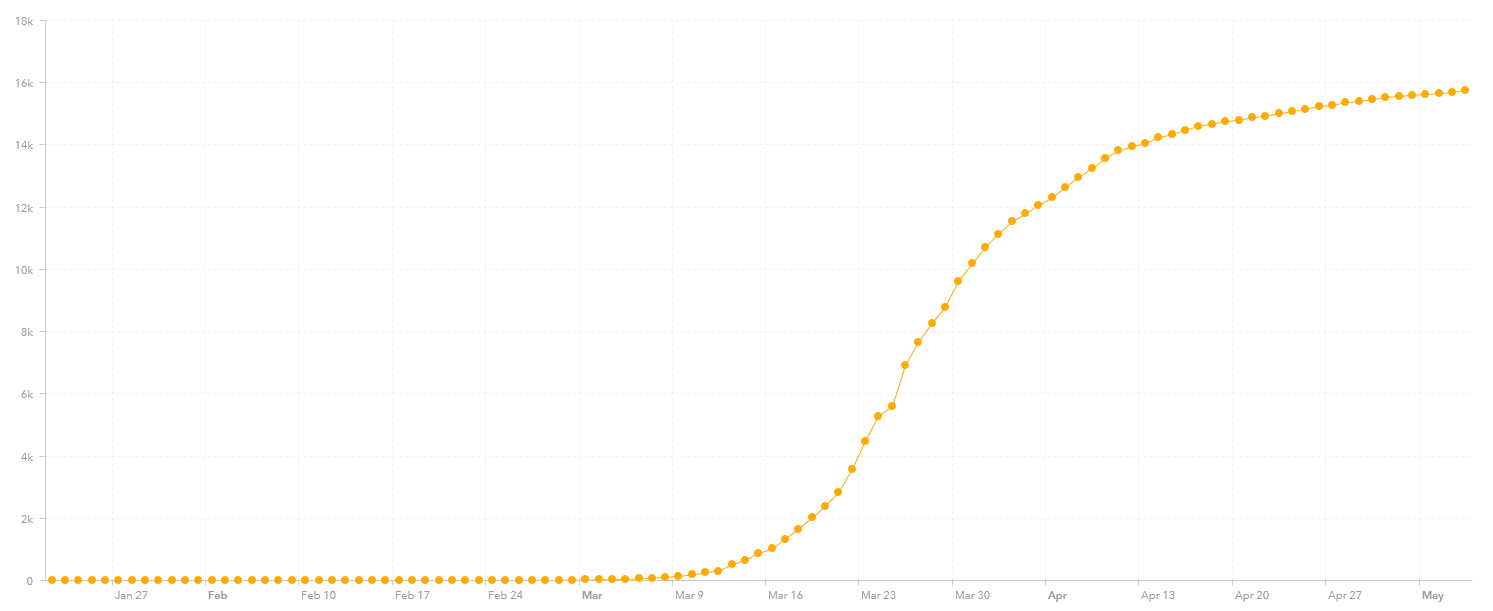
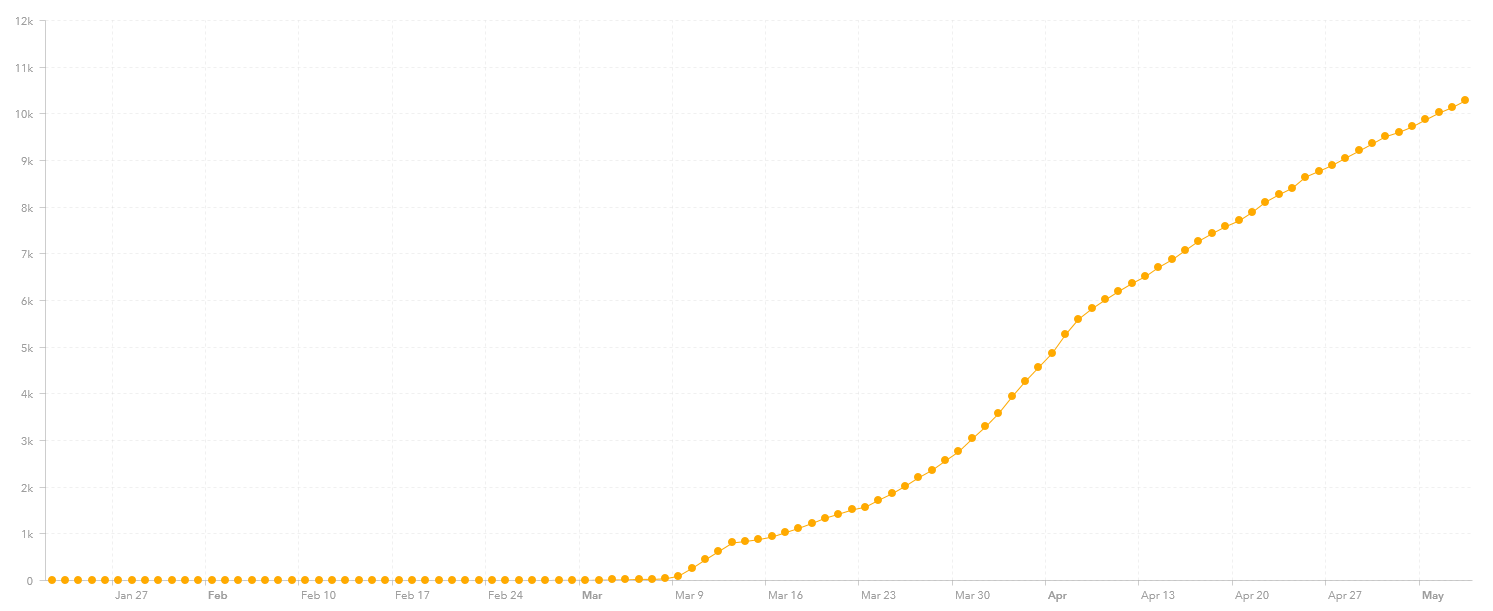

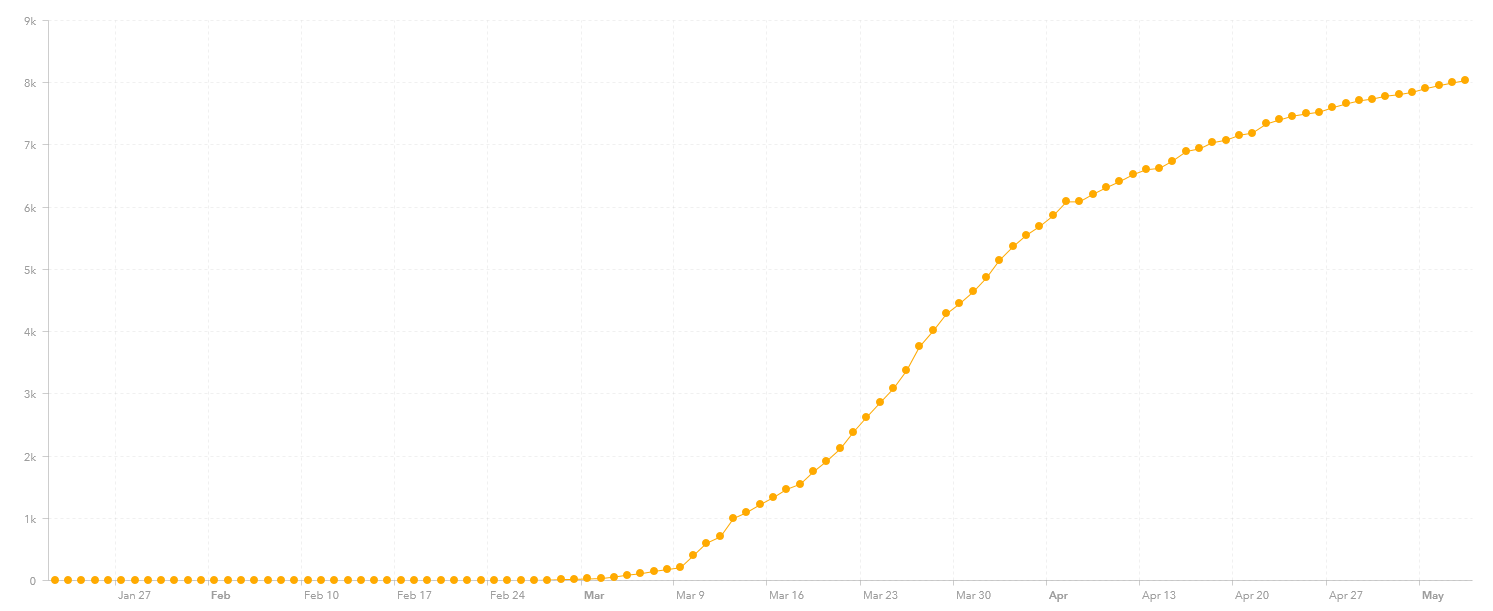
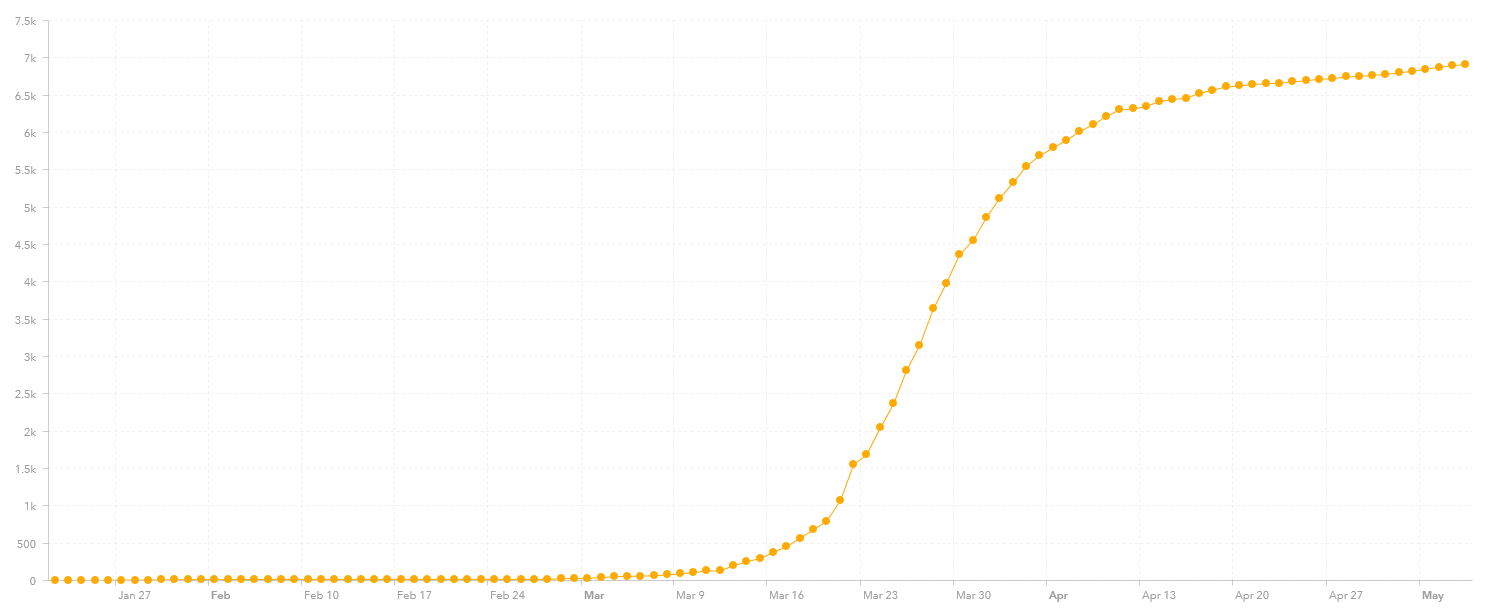
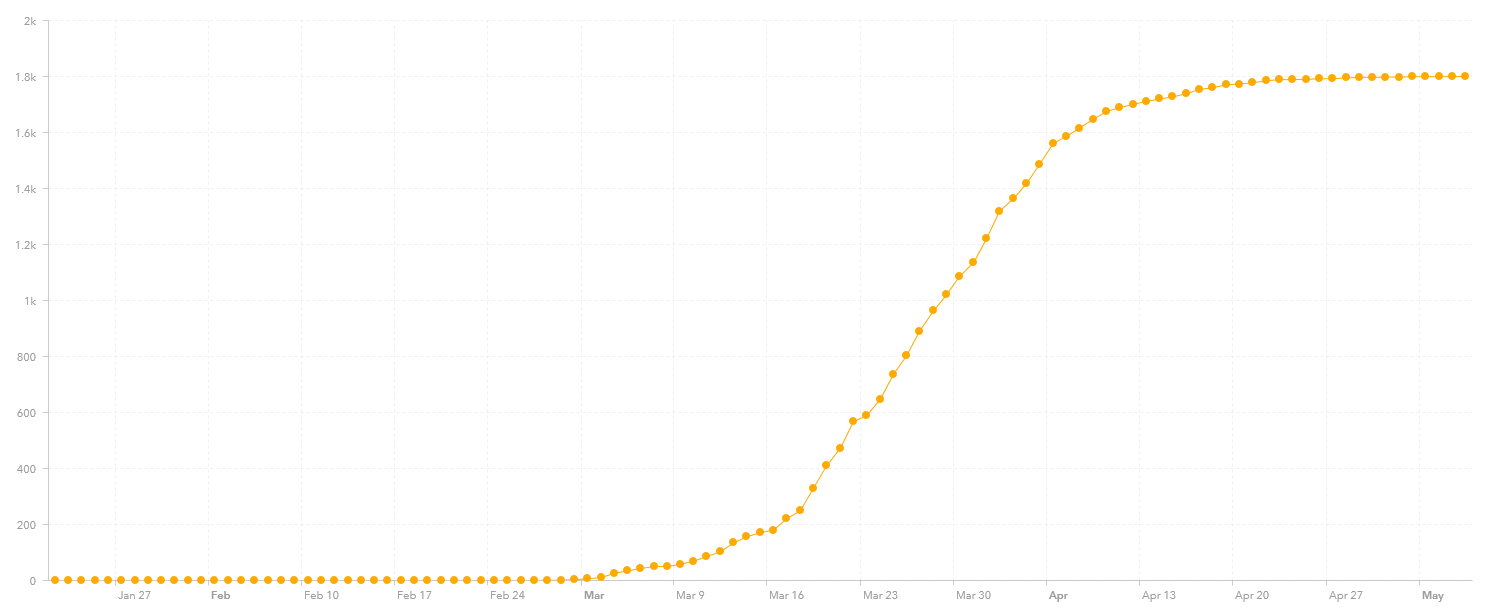
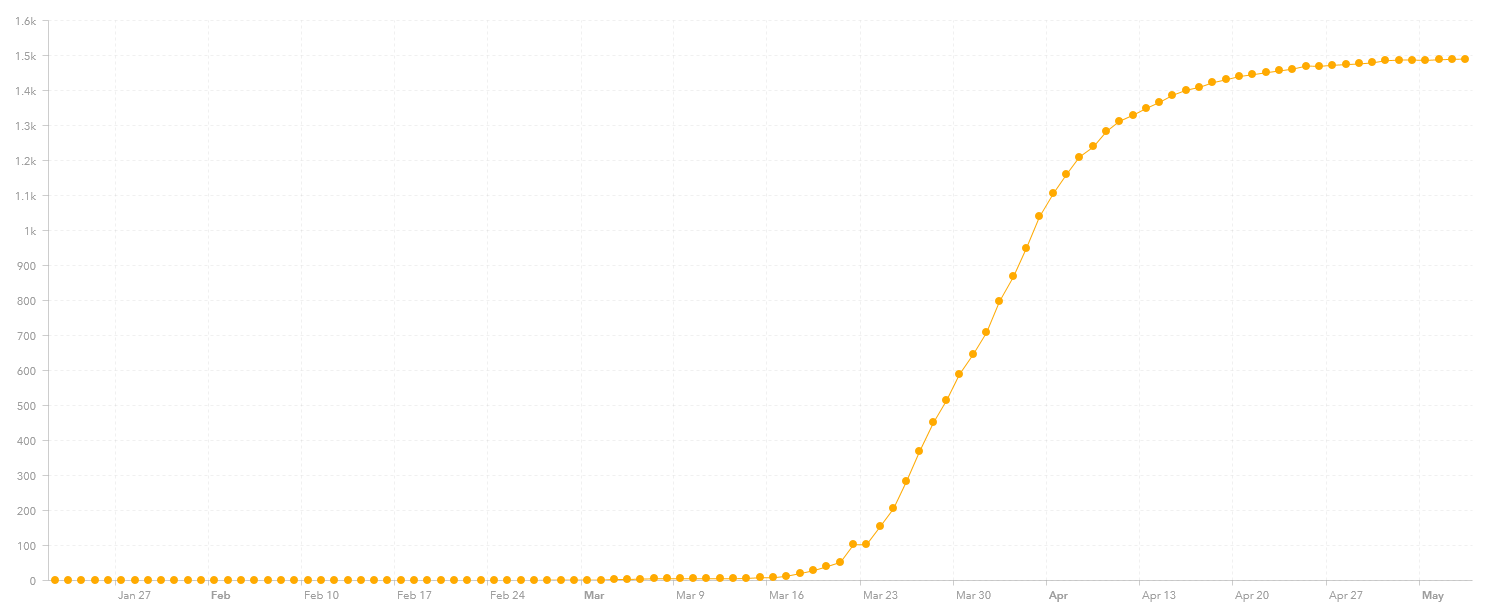
And then there is Singapore. Three weeks ago it had 3,614 reported cases. Two weeks ago it had 11,178 reported cases. Now it has 21,707 reported cases and 20 reported deaths. It appears that they have lost control of the situation again.
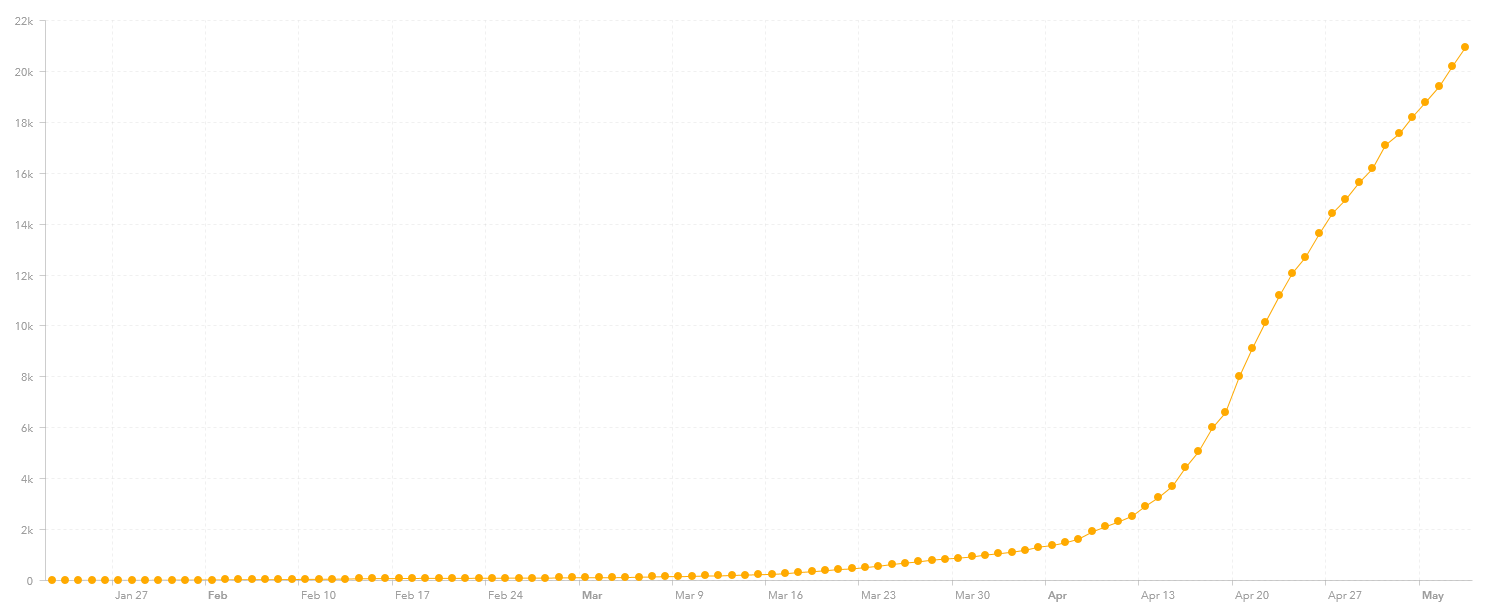
And then there is Sweden, which I gather did not do any lockdown procedures. They have 25,265 reported cases and 3,175 deaths. Compare their graph and their stats to their neighbors Denmark and Norway.
